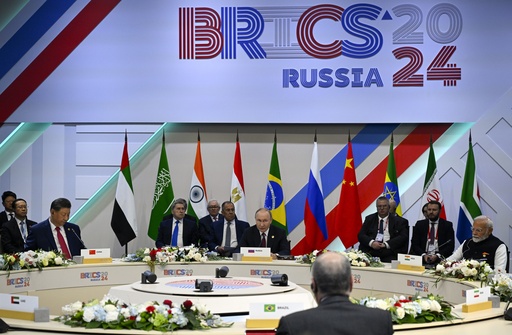
NEW DELHI — On Wednesday, during the BRICS summit in Russia, India’s Prime Minister Narendra Modi and Chinese President Xi Jinping held their first bilateral meeting in five years. This significant encounter followed shortly after both nations had announced a border agreement aimed at resolving a prolonged standoff that had involved thousands of military personnel in the mountainous region of Ladakh, as reported by India’s foreign ministry.
Details of the discussions between Modi and Xi were not immediately disclosed. The Indian foreign ministry has planned a media briefing to provide updates once the talks are concluded.
On Monday, India revealed that the two countries had reached an agreement permitting the resumption of military patrols along the disputed Himalayan border, marking a significant development since a violent clash in 2020 initiated a tense standoff. China affirmed this agreement the following day, indicating that both nations had come to some resolutions regarding their border disputes.
Lin Jian, spokesperson for China’s Foreign Ministry, stated on Tuesday that “China will work with India to implement these resolutions properly.” The last time the two leaders convened for a summit was in October 2019 in southern India, just prior to the escalation of military tensions along the disputed border. Since then, no formal bilateral meetings have taken place, and President Xi notably did not participate in the G-20 summit held in New Delhi the previous year.
The relationship between India and China took a negative turn in July 2020 following a military confrontation that resulted in the deaths of at least 20 Indian soldiers and four Chinese personnel. This clash has evolved into an enduring impasse in a challenging mountainous region where both nations have stationed large contingents of troops, bolstered by artillery, tanks, and aircraft.
India’s Foreign Secretary Vikram Misri indicated that the recently established agreement would facilitate the “disengagement” of troops stationed at the Line of Actual Control, which is the almost 3,500-kilometer de-facto border separating the two Asian powers. However, he did not clarify whether this disengagement would involve the removal of the additional troops that had been positioned in the aftermath of the 2020 skirmishes.
While both India and China have successfully pulled back forces from certain face-off sites, including Pangong Tso, Gogra, and Galwan Valley, they have maintained significant military presence in areas such as Demchok and Depsang Plains. Troops from both sides are now entering their fifth winter stationed in the harsh climate of Ladakh.
The Line of Actual Control delineates the territories held by China and India, extending from Ladakh in the west to Arunachal Pradesh in the east, a region claimed entirely by China. The two nations previously fought a deadly conflict over this border in 1962.
The military standoff has adversely affected economic relations between India and China, leading to a halt in investments from Chinese enterprises and the ban of numerous significant projects. Additionally, India has prohibited Chinese-owned applications, including TikTok, citing privacy concerns that pose potential threats to India’s sovereignty and security.
Despite political tensions, Chinese products remain prevalent in India, spanning a wide range from toys to smartphones and even Hindu idols. Data from the Indian government indicates that bilateral trade surged from $3 billion in 2000 to an impressive $95 billion by 2018, with the trade balance favoring China heavily. In 2022, India’s trade with China continued to rise, increasing by 8.47% compared to the previous year, reaching a total of $136.26 billion.
